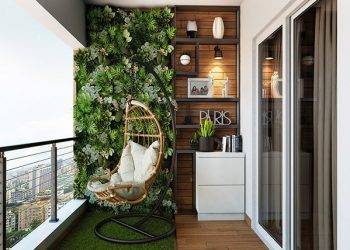Furniture
- Start profile
It is used to fasten the lower row of vinyl siding panels. After installation, it becomes invisible, because it is closed from above by the nearest row of panels.
- J-profile
The most common type of profile, due to its versatility and low cost.
It is indispensable during installation and is needed for edging door and window openings, vertical sections, at the abutment of the wall along an inclined line to the roof on the gable, when hemming soffits and for fastening soffits.
3-4. Outer and inner corner
Cover and hold the ends of the vinyl siding panels at the outer and inner corners.
- Final strip
- Finishes the horizontal sections of the wall, fixes the cut edge of the last strip.
- Used above and below windows, and other open openings.
- Horizontal siding
“ORTO” produces classic double siding or “ship beam”, in 10 colors.
- Peri-window bar
- Special profile for processing window openings.
- Partially or completely (depending on the depth of the window opening) closes the slopes.
- More expensive, but also more beautiful replacement of the J-profile.
- Drain bar
It is needed for draining water from the plinth or window.
- H-profile
Required to join vinyl siding panels horizontally if the length of the wall surface is greater than the length of the siding panels or if multiple colors of vinyl siding are used.
H-profile closes the connection of panels, making them more reliable and beautiful. From the outside, there is one solid strip from top to bottom, which looks like a single unit with external and internal corners, J-profiles, and other fittings that did not deviate from the general style of the building.
- Soffits
Soffits are used for hemming gable and eaves overhangs, in other words, they are ceiling panels for hemming the roof. Soffits are solid and perforated, solid soffits are essentially the same plastic panels.
Another thing is soffits with perforations, they allow good ventilation of the under-roof space, preventing the accumulation of moisture and stagnation of hot air.
Calculation of required materials
Calculation of siding
- We divide the house in the part that will be sheathed with kansas city siding into simple geometric shapes and their combinations. In 90%, a triangle and a rectangle are enough.
- We count their areas.
- Windows and doors usually do not subtract from the wall area, except when you have very large ones, for example: garage or sliding glass doors.
- We add up the areas of all areas of the building and add another 10% for padding and possible errors.
Calculation of accessories
The starting profile and the final strip – measure the length of the entire foundation, and add 10% for padding and possible errors.
Builders or sellers will help you calculate the rest of the fittings, based on the detailed plan of the house, because different installation options are possible, some components are interchangeable, and some can be refused.
Fastening the siding
Use aluminum, galvanized steel, or other corrosion-resistant nails, staples, or screws. Fasteners must enter the frame or crate by at least 20 mm.
Nails
The nail cap is at least 8 mm in diameter, the leg is 3 mm in diameter
Screws
The screws must enter the slot strictly in the center, there must be a distance of at least 1 mm between the screw cap and the siding. Galvanized self-tapping screws for sheet metal, size #8, are suitable.
Staples
Brackets, like all other fasteners, must enter the frame or crate by at least 20 mm. The brackets must be wide enough so that the siding can move freely, the distance from the bracket to the surface of the panel is 1 mm.
Mounting procedure
Remember: the siding panel (length 3.66 m) can expand or contract by 1 mm or more when the temperature changes.
Follow these rules:
- Make sure the panels are fully latched along the entire length of the bottom but do not force them upwards when attaching.
- When fixing, start from the center of the panel and move towards the edges.
- Always drive the nail in the center of the nail hole to allow room for expansion and contraction of the siding.
- Drive nails straight to avoid warping of the panels.
- Start attaching the outer and inner corners at the top of the uppermost holes. Place all other fasteners in the center of the holes, for horizontal siding at a distance of 30-40 cm from each other, for accessories 20-25 cm, for vertical siding at 30 cm.
- Wall-mounted panels must move freely from side to side.
Siding cutting
We recommend wearing safety glasses during any cutting operations. Always use the necessary protective equipment and follow safety rules.
- When working with a circular saw, set the blade with the fine teeth in reverse for a softer and cleaner cut, especially in cold weather. Cut slowly. Remember that cutting other materials (not vinyl) in the opposite direction is dangerous.
- When working with metal scissors, do not cut along the entire length of the scissors, use the blades only three-quarters of the way to make the cut neater and cleaner. Start cutting the panel from the upper, fastening part.
- Using a knife, make a deep groove in the panel, then bend and unfold the panel several times until it breaks along the marked line. No need to cut through the siding.













